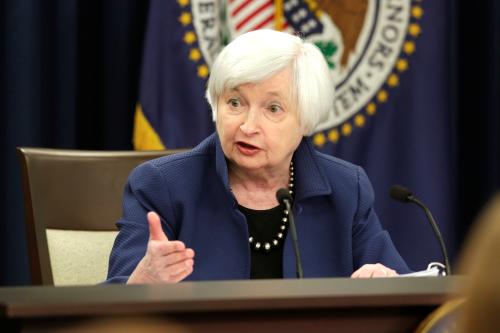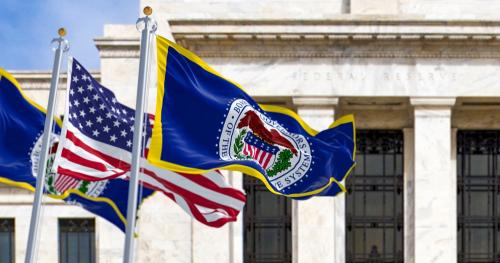This piece originally appeared in the Wall Street Journal on May 16, 2017.
Much has been made of President Trump’s eyebrow-raising assertion in a recent interview with The Economist that he came up with the phrase “priming the pump” to describe Keynesian-style fiscal stimulus.
From that interview, it sounds like Mr. Trump and his Treasury secretary are preparing to offer a budget later this month that increases the federal deficit over the next couple of years. The hope is that tax cuts and perhaps spending increases now will lead to faster economic growth over time, thus bringing in more revenue.
“Economic growth under the Trump administration could increase revenues as much as $2 trillion over the ten-year period,” Treasury Secretary Steven Mnuchin told The Economist. “So priming the pump in the short term leads to growth.”
One wrinkle in that story: The Fed.
Economic textbooks teach that when there is substantial unemployment and unused industrial capacity – when private demand is inadequate – then a deficit-widening increase in government spending or a decrease in taxes is called for. That understanding led to the Obama fiscal stimulus legislation in 2009. Despite some naysaying from Republicans, that bill is widely credited with helping to end the deep recession. Only one of the 44 top academic economists surveyed in 2014 by the University of Chicago’s Booth School disagreed with the assertion that the “U.S. unemployment rate was lower at the end of 2010 than it would have been without the stimulus bill.” Most agreed that “the benefits of the stimulus will end up exceeding its costs,” even factoring in higher taxes in the future.
The Fed isn’t slamming on the brakes. It is pulling its foot off the accelerator, and is prepared to tap on the brakes if the economy proves much stronger than anticipated.
Today’s economy is different, though. Unemployment is now at 4.4%, not the 10% of 2009. The Fed considers that to be full employment, and is beginning to raise short-term interest rates, albeit gradually because inflation remains below its target. The Fed isn’t slamming on the brakes. It is pulling its foot off the accelerator, and is prepared to tap on the brakes if the economy proves much stronger than anticipated.
Fiscal policy at all levels of government, meanwhile, is close to neutral, neither stimulating or retarding economic growth. What happens if President Trump and Congress decide to press down on the accelerator with a big tax cut that isn’t offset by spending cuts? Economic textbooks and Fed models provide the likely answer: At full employment, fiscal stimulus likely will have little impact on output and mostly result in more inflation.
So the Fed probably would respond to a big Trump tax cut by raising interest rates faster than it would otherwise to prevent the economy from overheating. The bigger any Trump-backed increase in the federal deficit, the faster the Fed will raise interest rates, reducing the boost from fiscal stimulus and raising the government’s interest tab.
So much for Mr. Mnuchin’s dreams of $2 trillion in extra revenue from Trumpian pump-priming.
The Brookings Institution is committed to quality, independence, and impact.
We are supported by a diverse array of funders. In line with our values and policies, each Brookings publication represents the sole views of its author(s).





Commentary
Op-edHow will Fed react to Trump’s pump priming?
May 16, 2017